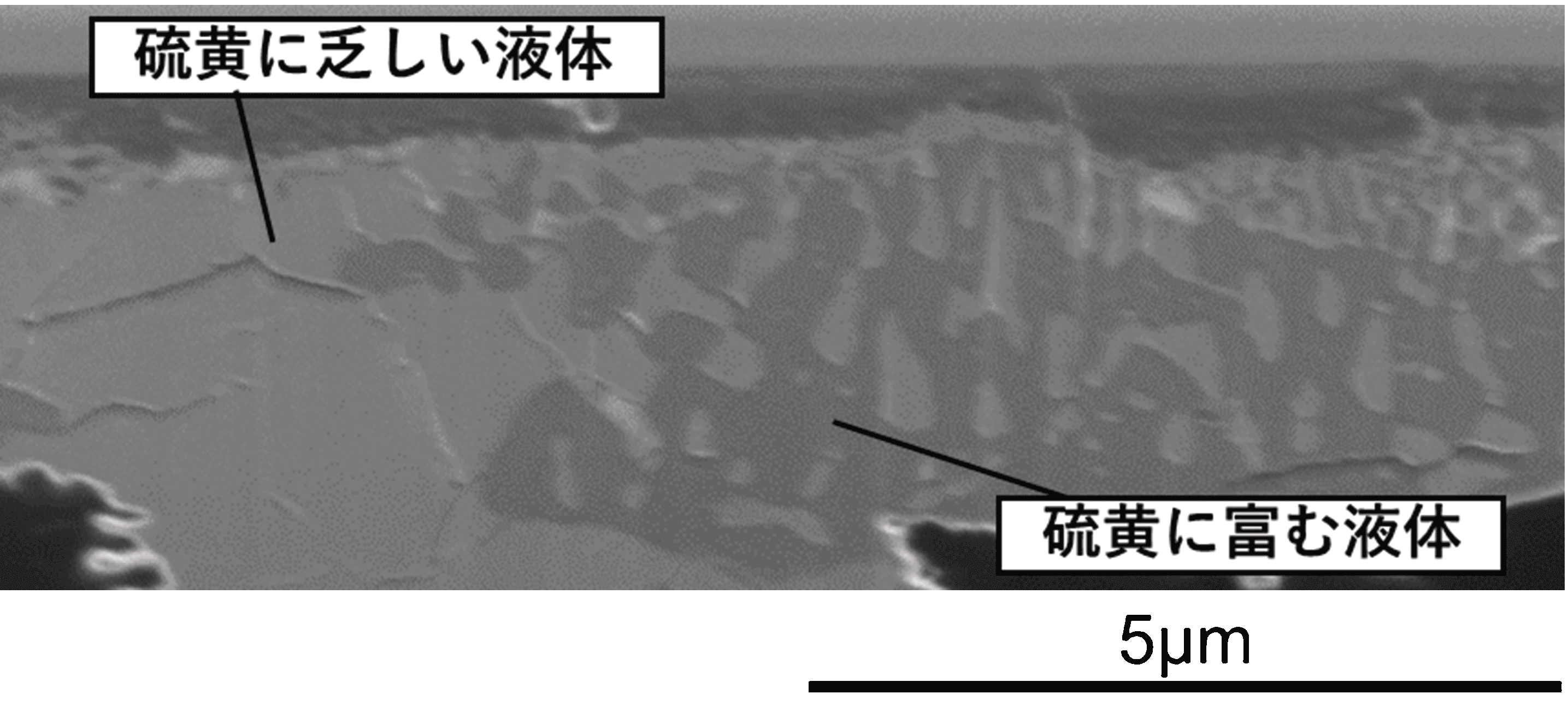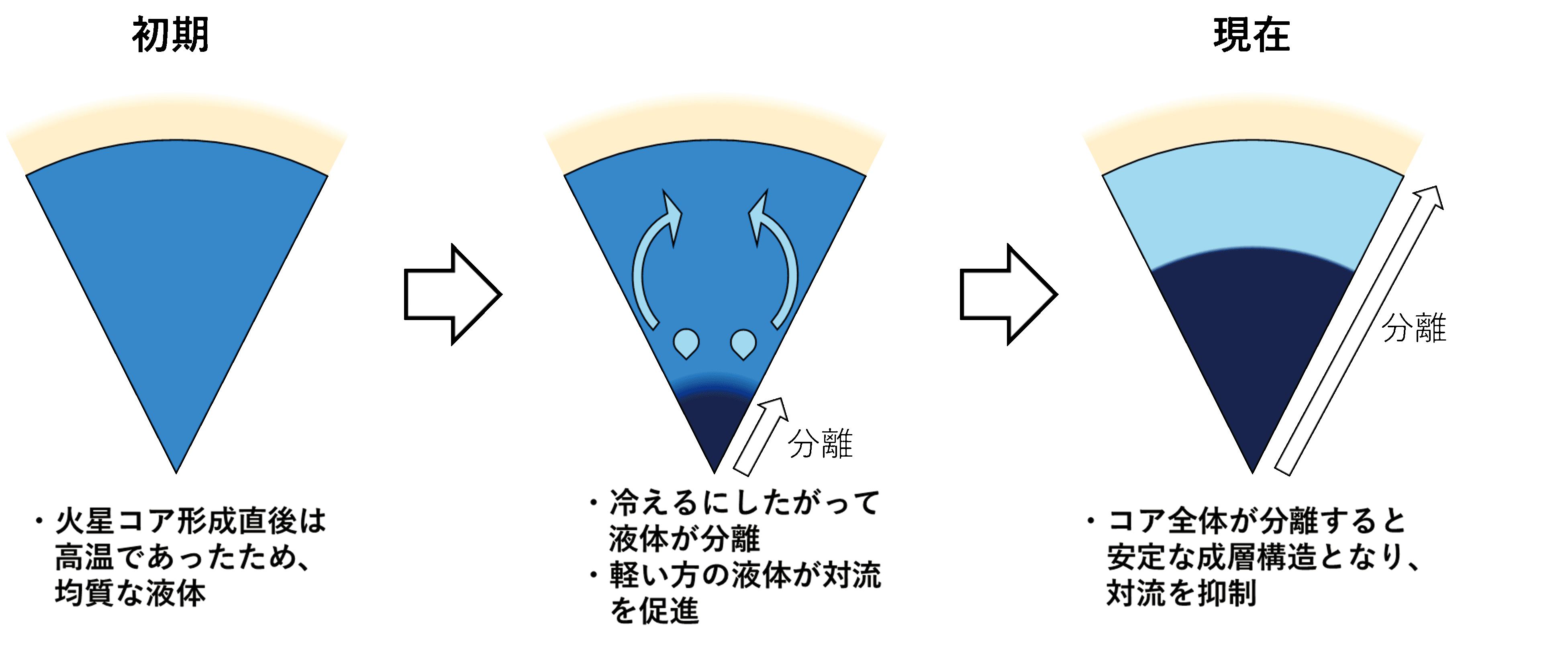Disclaimer: machine translated by DeepL which may contain errors.
Why did Mars lose its magnetic field and evaporate its oceans?
Shunpei Yokoo (Department of Earth and Planetary Science, 2nd Year Doctoral Student)Takashi Hirose (Professor, Department of Earth and Planetary Science) |

![]()
Why did Mars lose its magnetic field unlike Earth? To solve this mystery, it is necessary to clarify why convection occurs in the Martian core and why it has ceased. The metallic cores of rocky planets such as Earth and Mars contain iron and nickel plus lighter (lower atomic number) elements. Studies of meteorites from Mars suggest that Martian cores contain large amounts of sulfur. In addition, the InSight spacecraft is currently exploring the interior, and last year reported the detection of a liquid core. Since the density of the liquid core was smaller than previously predicted, the Martian core should contain light elements other than sulfur. During the formation of the planets in the solar system, it is thought that a large amount of water was transported to the Earth and Mars from the present-day asteroid belt or even from the outer regions. Hydrogen derived from that water is one of the most likely candidates for light elements in the Martian core.
In this study, we performed an experiment to melt an iron-sulfur-hydrogen alloy under high pressure, which is equivalent to that of the Martian core. The cross-sectional observation of the recovered sample showed that a liquid containing both sulfur and hydrogen existed in the sample heated above 3000 K at 40 GPa (the pressure at the bottom of the Martian core = the pressure at the center of the Martian core). On the other hand, in samples heated to lower temperatures, hydrogen-rich liquid iron and sulfur-rich liquid iron were observed to be separated like water and oil (see figure below). The present temperature and pressure in the Martian core correspond to the conditions for the separation of the two liquids.
 |
|
 |
|
| Figure: (Upper) Experimental sample showing the separation of hydrogen-rich liquid iron and sulfur-rich liquid iron like water and oil under the high pressure and high temperature equivalent to the Martian core. (Bottom) Schematic of convection enhancement (formation of magnetic field) and suppression (extinction of magnetic field) in the Martian core due to liquid separation. | |
The early Martian core immediately after the formation of Mars would have been hotter than today. The Mars core, which was a homogeneous liquid at high temperatures, began to cool, and eventually the liquids began to separate at the bottom of the core (the center of Mars) (see figure below). The heavier liquid accumulated at the bottom, while the lighter liquid floated up. This promoted convection in the Martian core and generated a Martian magnetic field. However, when cooling progressed sufficiently to cause liquid separation in most of the core, a gravitationally stable stratification structure was formed, with the heavier liquid lower down, which in turn suppressed convection in the core and eliminated the Martian magnetic field. Thus, the presence of both sulfur and hydrogen in the Martian core can explain both the generation and disappearance mechanisms of the Martian magnetic field.
Further exploration of the interior of Mars and the discovery of stratification in the core will allow us to verify the scenario of this study. This will also tell us about the material materials that made Mars and the planet formation process.
The results of this study were published in Nature Communications 13, 644 (2022) by S. Yokoo et al.
(Press release, February 3, 2022)
Published in Faculty of Science News May 2022
Communicating to Faculty Research Students >


